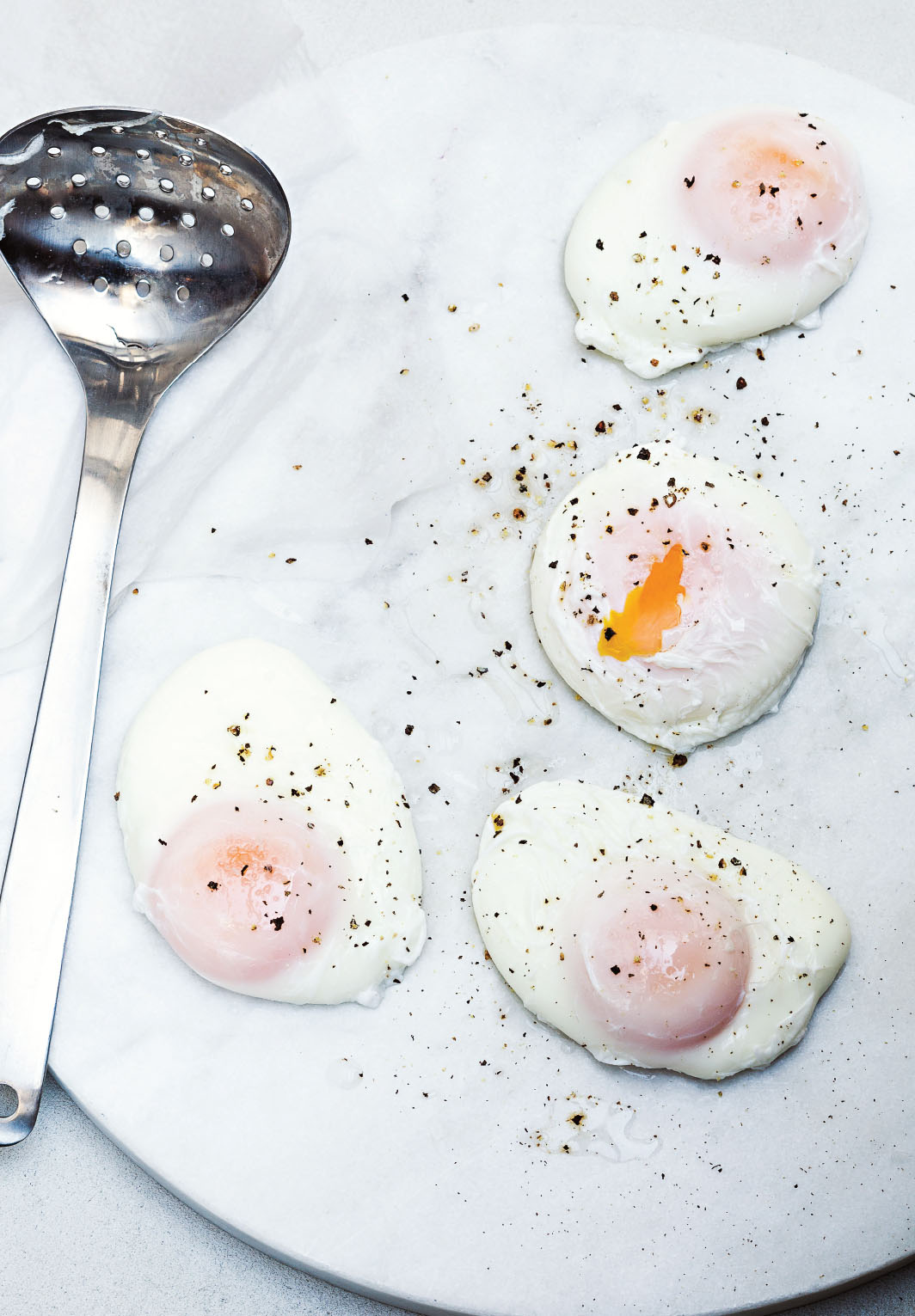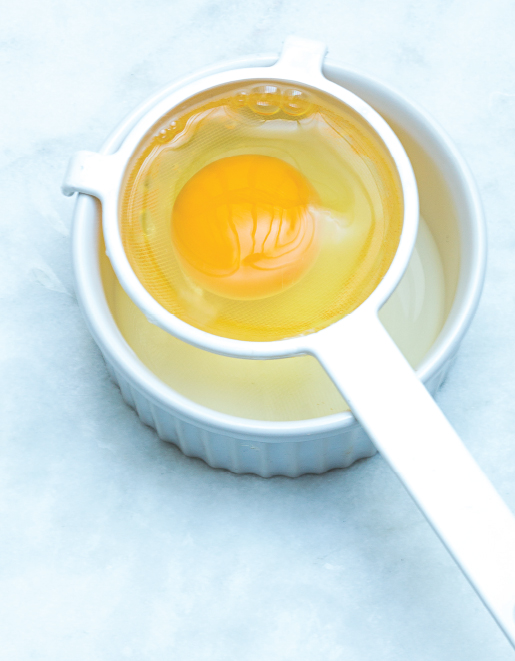![]() Master Recipe
Master Recipe ![]()

Many, many eggs were sacrificed in our test kitchen trying to determine the very best way to poach the perfect egg. We tried vinegar in the water, but found that although it helped give shape to the egg whites, they became rubbery and were laced with a faint unappealing acidic flavor. We tried simmering on the heat; taking off the heat and covering; swirling the water in a whirlpool, leaving the egg untouched after it hit the water—you name it, we tried it. The number one principle is to use the freshest eggs possible; if you start with less than that, all the other steps are more or less in vain (see more tips).
4 SERVINGS
EQUIPMENT: A 3-quart (3 l) saucepan about 9 inches (23 cm) in diameter; a mini fine-mesh sieve or tea strainer; 4 small bowls or ramekins; a slotted spoon; paper towels, folded in quarters.
1/2 teaspoon fine sea salt
4 large, ultra-fresh eggs, free-range and organic, at room temperature
1. In the saucepan, bring 1-1/2 quarts (1.5 l) water to a gentle simmer. Add the salt.
2. Place the sieve over a ramekin and crack the egg into the sieve, allowing any thin watery egg white to drain away. Discard the drained egg white. Very gently, so as not to dislodge the white from the yolk, slide the egg from the sieve into the ramekin. Repeat with the remaining eggs and ramekins.
3. Gently dip the edge of each ramekin into the simmering water, so that the egg slides smoothly into the water. Turn off the heat and cover the pot until the eggs are cooked through, about 3 minutes for room-temperature eggs. The white should be firm, with no translucent areas remaining, and the yolk should have a thin opaque film over the top, but still be soft and liquid inside.
4. With the slotted spoon, carefully remove the eggs one at a time, holding the folded paper towels underneath to absorb any water. Serve immediately.

NOTE: If poaching one egg at a time, and if your egg white is plump and not watery, try swirling the water in a whirlpool before adding your egg to the water. The motion will help the egg white wrap around itself, creating a very neat and round cooked white. If the white is watery, however, the motion will simply tear the white apart, leaving streaks through the water. Using this technique for multiple eggs can get tricky, as the motion of the water can cause them to bump into one another.